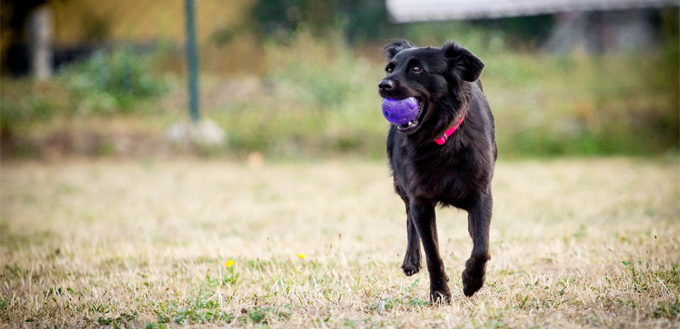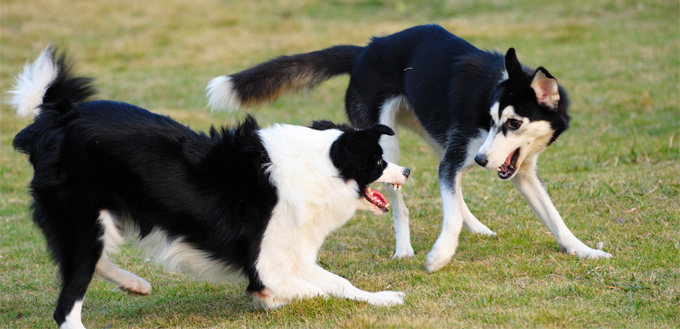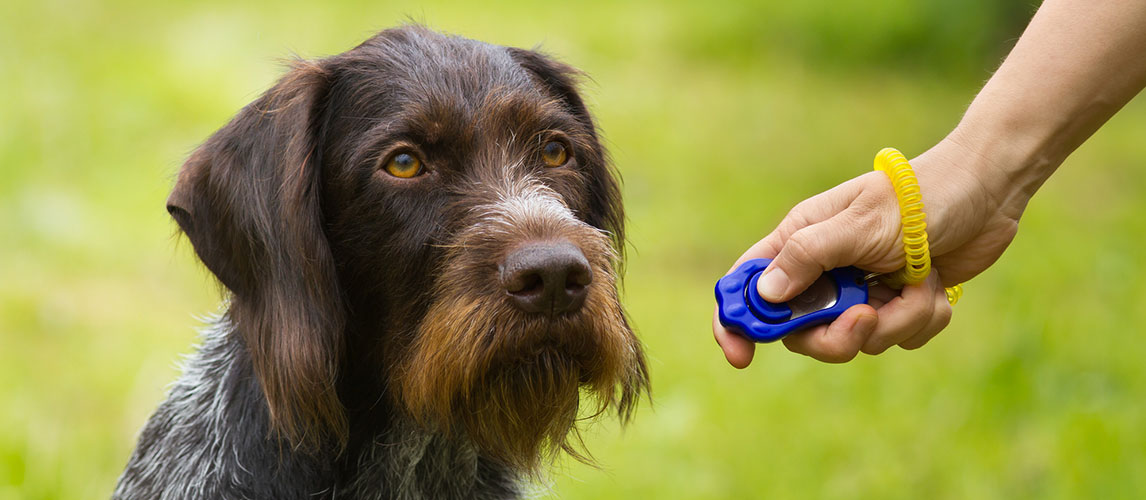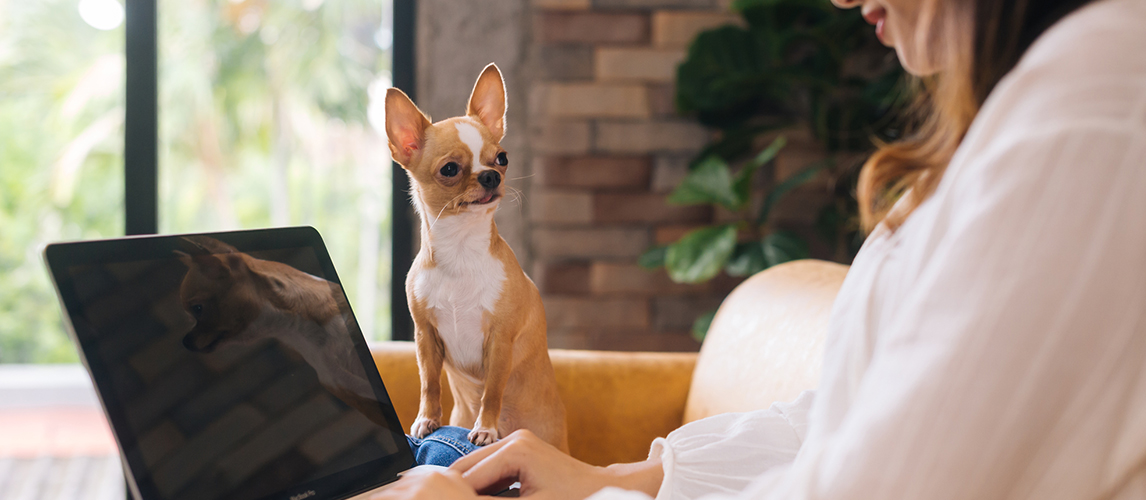As your pup matures into a fully grown adult, you’ll notice an increase in possessiveness in their activities. Whether it’s possessiveness of toys, their food, territory or family members, you’ll notice an eagerness to dominate. Well, no reason to worry as this is a natural way of your dog expressing their anxiety or fear over a threat. Even though it’s a part of their natural instincts, it’s important for you to intervene when your dog is behaving in such a manner because they are a house pet after all. You’ll need patience to train your canine to help relax and learn.

Know Whether it’s Possessiveness or Other fear
First things first, you’ll need to understand your dog’s behaviour. For instance, if your dog is play fighting with you or another pup over a tennis ball, it’s absolutely fine. Sometimes they get stubborn and don’t let go of their toys, no matter how much you coax them. These are trivial issues and do not really have much affect between your bonding with your dog. However, issues grow bigger when your dog growls or snaps at you when you try your best to take a toy back. Aggression is a major warning sign. Here are some of the signs that indicate a highly possessive dog:
- Declining to give up a treat or toy when you ask them to
- Snapping at other dogs when they are eating
- Hoarding toys
- Growling at other pets in your house over toys or space
- Typical “jealousy” behaviour such as head-butting another pet who’s being patted
Does your dog’s behaviour match with any one of these? If so, you need to take immediate action before your loveable pup’s personality changes permanently for the worse!
Here are 5 strategies for you to handle your highly possessive dog:
1. Manage Your Environment
Note if a particular thing or a situation is provoking possessive behaviour. For instance, if it’s a dog toy, prevent access to it completely and eliminate the source. You can make use of doors or dog gates in your home to keep your possessive dog from reaching for something that they guard. But if you have two dogs in your house out of which one loves something that the other doesn’t, you may still give him/her their fair share in a separate room, of course. On the contrary, your dog may act possessive in certain situations, suppose, some dogs have no problem eating alone in a room, but they tend to guard their food bowl if another pet is around. In such cases, you can either prepare meals in separate bowls or in separate times.
Related Post: Best Interactive Dog Toys
2. Leave, Drop and Trade Ya!
Sometimes all your dogs need is a basic obedience reminder course. You may start teaching your dog all the basics like “sit” or “stay”, along with three other commands that could be very useful:
- Leave It: This is an important command because it helps you manage your possessive dog’s reaction to certain resources. It forces your dog to ignore a fascinating treat or toy and emphasize their attention on you.
- Drop It: This key command is effective if your dog is possessive about their toys. In fact, this command is to be trained to your dog when they are in their first few months as it will prevent possessive behaviour before it could even start.
- Trade ya: This command is a cousin of “drop it” and is useful when your dog is not willing to drop the item that he/she is guarding. It means you offer them an even better stuff than the one that they’re guarding. You could trick your furry friend into showing a tasty dog treat and say “trade ya”. Let them follow it with a sit, and when they finally sit, they get the tasty treat as their reward!
Training does take some time and patience, but your patience will ensure you and your beloved pet breathe easier.
3. NILF!
Usually, possessive dogs guard their resources. The longer you let them get away with it, the more it will be reinforced. It’s tough to say no to your dog, even when they beg for it with their puppy dog eyes. Plus, they get disappointed when you deny them what they want and that is totally understandable. But know that “Nothing in Life is Free” so, a little training will help!
“Nothing in Life is Free” or NILF training will teach your dog that all of their resources come from you. The idea of this training is to ask your dog to work for something that they want badly. You may go on looking for professional trainers to give you the details regarding this, but here’s a small part of this training. Ask your dog to hold a “sit” for quite long before you finally serve them dinner. NILF is a safe and positive reminder to your dog that you control their resources. This will certainly reduce their possessive behaviour.
4. Help Your Dog Achieve a Higher Level of Obedience
This is somewhat related to the NILF trick. Watch out if your dog is not obeying you, meaning if you call them and they don’t come and don’t stay when told. This could mean that your dog is not having enough respect for you. When your dog has problems with possessiveness, you should consider their level of obedience. Is your furry friend not abiding by your rules in any way? Look for a way you can make him/her listen to you when they’re off leash. That’s when you’ll know which area you’ve to work on. To help your dog improve in his overall manners, you’ll need to work on his basic obedience. it’s completely okay if you need to attend classes on obedience or work one-on-one with a professional trainer.
5. Desensitization and Condition for Your Possessive Dog
If your dog is highly possessive, i.e. growling or snapping at you, then you might need a longer course of training for your canine. Desensitization and counter-conditioning is a slow and steady training for changing your dog’s behaviour. It’s most useful for dogs who growl at their owners when their owners want to take away a toy or guard their food bowl when other pets are around. The idea of this is to teach your dog not to react emotionally to a certain object or situation. You’ll need weeks to work with your possessive dog on this. However, you can always have rewards when you see that they are really trying their best to change their reactions. Desensitization and counter-conditioning are said to be very effective, although it takes a lot of your time and patience. It’s best to consult a professional behaviourist if you feel that your dog would benefit from this type of training.
Related Post: Dog Bowls
Additional Tips
There are so many tactics to handle your highly possessive canine, however, it’s always best to start from the first. Teach your dog that good things will take place when other pets or you approach their food or resources. Try to use your own hands to refill your dog’s food bowl at their mealtimes. This way your dog will learn that they get more food when you are near their food bowl. You may also give them a high value treat so that they value you even more.
Know that the aforementioned tips are only when your dog starts showing mild possessive behavior and understand the difference between play-fighting. If your dog starts showing aggression such as snapping, biting or growling, it’s time you should consult a professional trainer. Do not take attempts to amend extreme behaviour on your own. Consulting an expert will be fruitful as they will help you determine the root cause of your dog’s aggression and develop an effective training program needed to reduce it.
How Can I Prevent this from Happening Again?
If this is the first time it has happened, there is a chance that it might happen again if you don’t take the necessary steps. Once your fellow dog has recovered, here are some steps that you can take in order for this to never happen again:
- Don’t pamper your dog too much
- Set rules and regulations for their activities
- Ensure that everyone in your house participates in training the dog. This will make your dog understand that everyone in your house has equal ranking over the dog
- Your dog should receive enough exercise in a day that will stimulate them mentally and keep them happy and healthy
- If you’re planning on bringing a new dog, make sure they are companionable

Bottom Line
If you’ve never seen such behavioural issues in your dog, congratulations! Consider yourself to be really lucky. You must be doing dog-parenting the right way. However, if you have faced aggression in your dog due to highly possessiveness, take comfort in the thought that it is treatable and with proper research, you’ll be able to do better in the near future.
What are some of the signs of high possessiveness that you’ve come across your furry friend? Let us know in the comments below!
Sources:
- Debra Horwitz, DVM, Possessive Aggression in Dogs, VCA Hospitals
- Aggression, American Society for the Prevention of Cruelty to Animals
- Dr. Gary Michelson, Treating Possessive Aggression in Dogs, Michelson Found Animals Foundation







